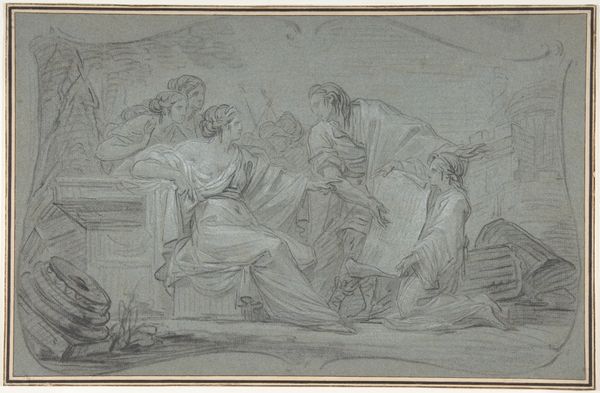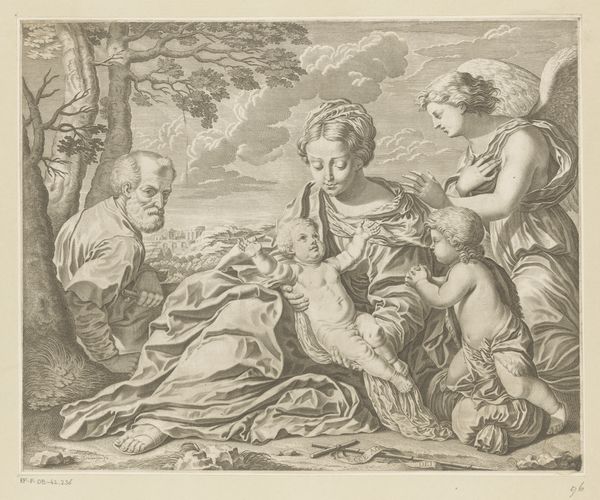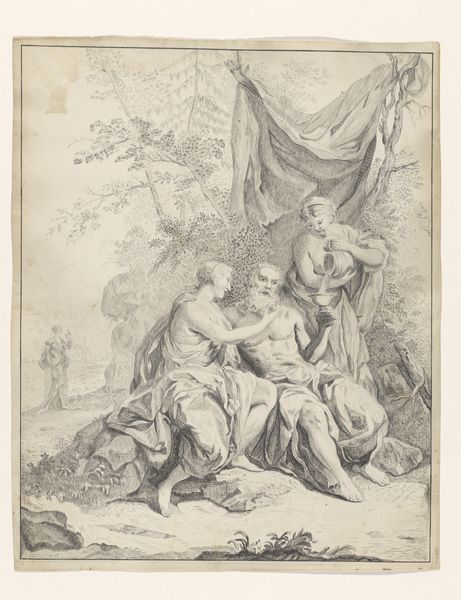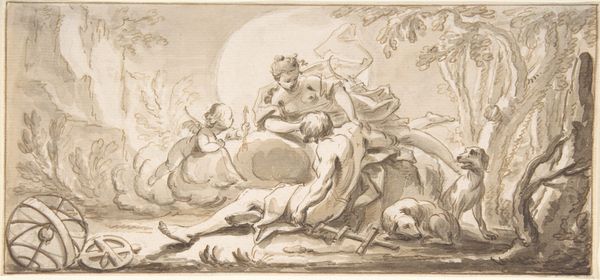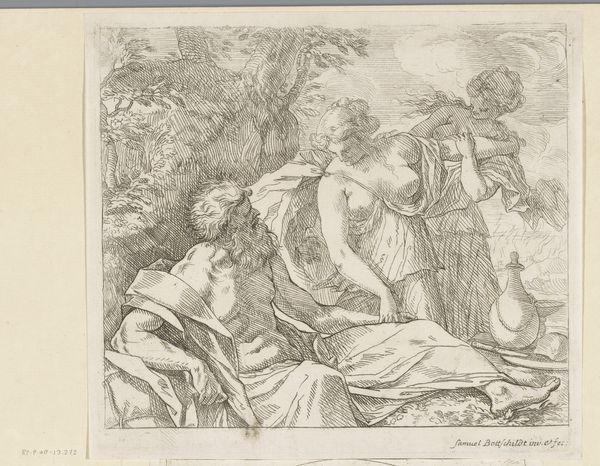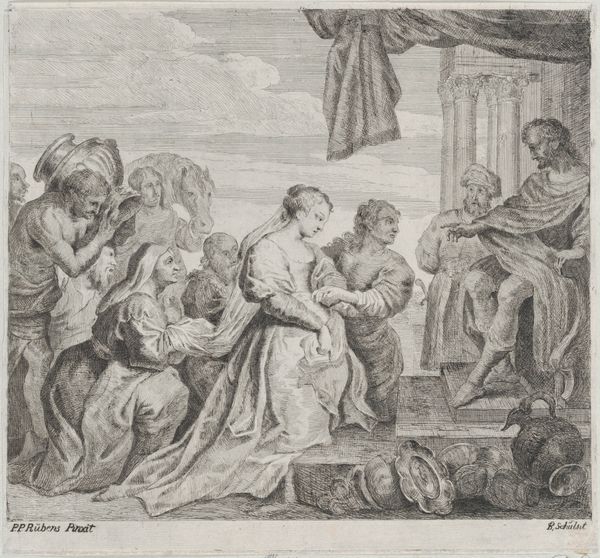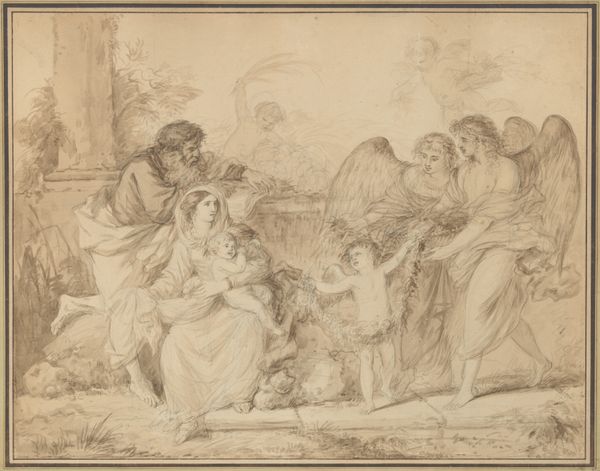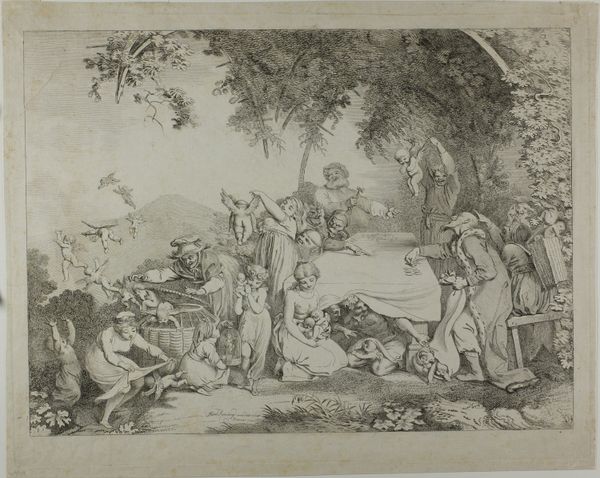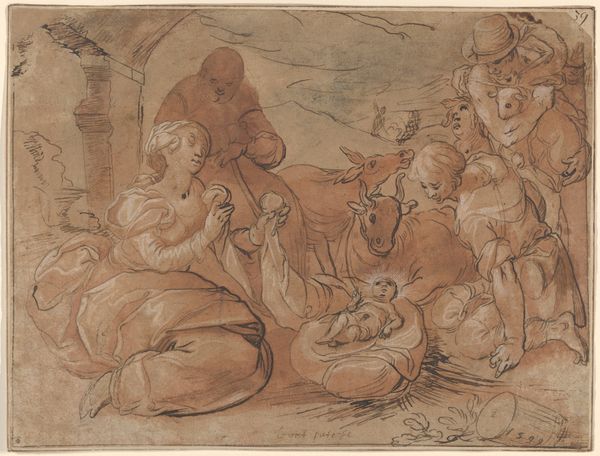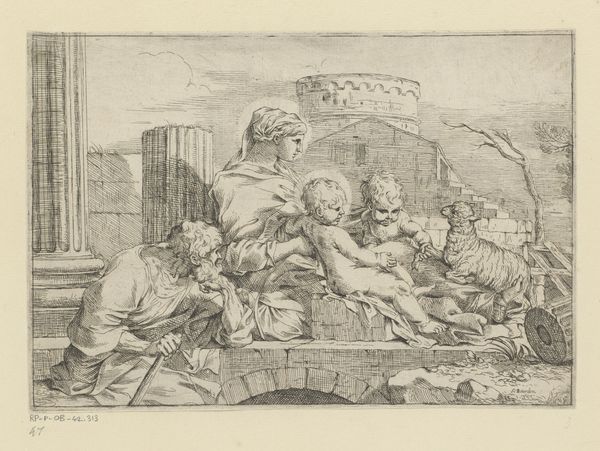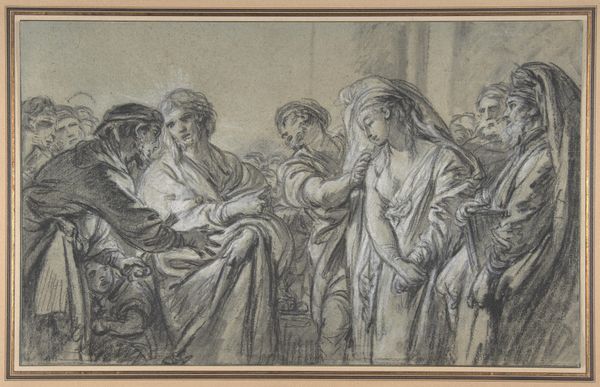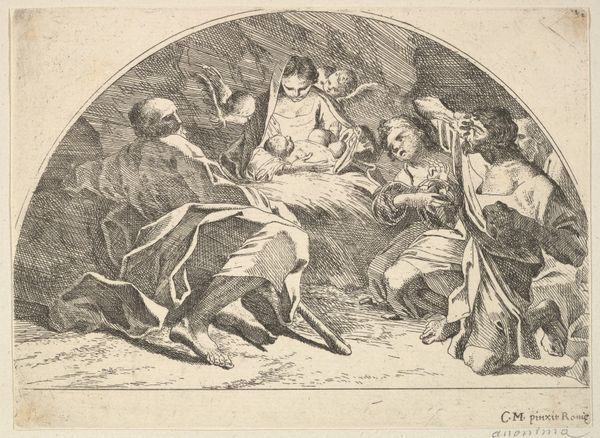
drawing, print, paper
#
portrait
#
drawing
#
narrative-art
# print
#
figuration
#
paper
#
line
#
history-painting
#
academic-art
#
realism
Dimensions: 214 × 287 mm
Copyright: Public Domain
Curator: This compelling work, simply titled "Entombment," was created by Michael Kock in 1792. It's currently part of the Art Institute of Chicago's collection. Immediately, I am struck by how somber the overall tone is. Editor: The subdued palette certainly contributes to that, doesn't it? The limited range emphasizes the emotional gravity of the scene. And what I think Kock masterfully handles here, within the stylistic bounds of academic realism, is the deployment of line—particularly noticeable in the figures' drapery. Notice the expert crosshatching to define the planes of each form and add depth. Curator: Absolutely, you can feel the weight and texture of the cloth they use to carry him. It's almost like you can hear the soft shuffling and subdued cries. I always find myself drawn to the faces of the women on the left – their grief feels so immediate, so raw. You can feel their sorrow, and wonder how it must feel to carry that burden in reality. Editor: Indeed. Observe how the composition funnels our gaze directly to the central figure—Christ—reposing peacefully despite the chaos and suffering surrounding him. The artist's placement of this recumbent body draws the viewer in, urging a sort of solemn meditation on mortality itself. He does not depict just a historical moment, but uses semiotic forms and figures to comment on broader questions around pain and existence. Curator: Yes, his is a kind of serene resignation set against palpable mourning. It makes you consider what's more difficult, really; bearing that agony in the moment or waking each day forward without their light. Kock almost has this ethereal style where he makes heavy themes incredibly thought-provoking through detail and realism. I appreciate art that gets me thinking about my everyday world a bit deeper, and what is left behind. Editor: Precisely, and by adhering to these formal elements—the deliberate composition, the controlled linework, and the muted color scheme—Kock elevates a specific historical scene to an allegory about faith, grief, and the human condition as a whole. It's a study in carefully constructed emotional space. Curator: It is more than a style, it’s a feeling – an emotional response to death as felt through the ages, so profoundly displayed. Thanks for opening up new perceptions of this striking piece today! Editor: My pleasure; it is indeed ripe with possibilities of new observation with each viewing.
Comments
No comments
Be the first to comment and join the conversation on the ultimate creative platform.
